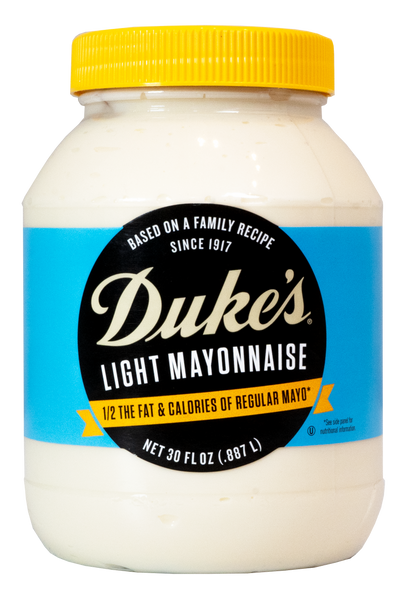
Effective Ways to Optimize Green Sea Turtle Diet in 2025
The green sea turtle (Chelonia mydas) is an essential species in marine ecosystems, primarily due to its herbivorous diet that influences the ecology of seagrass beds and other marine vegetation. Understanding the diet of green turtles is crucial for conservation efforts and ensuring their health in changing environments. By optimizing their feeding strategies and dietary sources, we can promote the overall growth and health of these remarkable creatures, which face numerous challenges, including habitat loss and the impacts of climate change. This article outlines effective ways to enhance the green sea turtle diet based on current research and promising practices for the year 2025. We will explore the primary components of their diet, effective foraging strategies, and the critical role of marine vegetation in their nutritional needs.
Through this guide, readers will gain insights into how we can support green turtle populations by optimizing their dietary habits. By focusing on their herbivorous preferences and feeding behaviors, we can advocate for better marine conservation practices that benefit not only the turtles but also the ecosystems in which they thrive.
Understanding the Green Sea Turtle's Primary Diet Components
Building on the significance of a well-rounded diet, it's vital to explore the primary components that define the green sea turtle's feeding habits. Understanding these elements enables us to address their nutritional needs effectively. Green turtles primarily feast on seagrasses and various types of algae, creating an essential input to the marine food web. Their herbivorous diet consists mainly of the leaves of seagrass beds and other marine vegetation, impacting the making of these ecosystems.
Seagrass and Its Critical Role
Seagrass plays a significant role in the diet of green sea turtles due to its abundance and nutrient density. These aquatic plants provide not only food but also habitat, playing a pivotal role in maintaining marine biodiversity. When analyzing the diet of green turtles, the consumption of seagrass stands out as a primary component. Green turtles graze on seagrass meadows, which are crucial ecosystems that support various marine life forms. Studies indicate that healthy seagrass beds are paramount for the growth and reproductive success of green turtles.
Algae: A Nutritional Supplement
In addition to seagrass, green turtles also consume various algae species. The types of algae, including green algae and brown algae, contribute essential vitamins and minerals to their diets. Algae consumption can vary based on geographic location and habitat availability, showcasing the dietary flexibility of green turtles. Their ability to adapt their feeding habits reflects a practical approach to resource availability in changing coastal and marine environments.
Mangrove Leaves and Other Plant Sources
Aside from seagrass and algae, green sea turtles also feed on mangrove leaves, which provide another food source. Mangrove ecosystems are dynamic and essential for many marine species, including turtles. By understanding these additional food sources, conservationists can better support the dietary needs and habitat preferences of green turtles, ensuring a sustainable foraging environment.
Variations in Diet Due to Habitat Changes
The diet of green turtles can also vary significantly depending on geographical and seasonal factors. In some regions, the prevalence of certain plant species may fluctuate due to ecological changes or human activities. Such variations prompt a need for dietary adaptations in turtles, influencing their foraging behavior and health. These dietary shifts warrant careful monitoring, as they reflect not just on the turtles’ immediate well-being but also on the ecological health of the oceans.
Optimal Foraging Strategies for Green Sea Turtles
Taking this concept further, developing effective foraging strategies reinforces the importance of dietary optimization for green turtles. These strategies will enhance their feeding efficiency, particularly in nutrient-scarce periods and habitats. Understanding their foraging behavior assists researchers in tracking shifts in feeding patterns, effectively aligning conservation goals with the dietary needs of these majestic creatures.
Understanding Green Turtle Grazing Patterns
Green turtles exhibit a range of grazing patterns when foraging, influenced by environmental factors such as water temperature and the availability of food sources. Research has shown that these patterns are adaptive, allowing turtles to effectively utilize their habitats. By studying these grazing habits, scientists can better understand the energy and nutritional requirements of green turtles, essential for their growth and reproductive success.
Seasonal Diet Changes and Adaptations
Seasonal diet changes greatly affect green turtles, particularly in regions with fluctuating temperatures and food availability. For instance, during certain months, specific marine vegetation may thrive, providing rich foraging grounds that meet their nutritional requirements. Tracking these seasonal changes ensures that conservation efforts align with the turtles’ natural habits to promote health and sustainability in their populations.
Dietary Tracking Studies
In-depth dietary tracking studies utilizing technology like satellite tagging and stable isotope analysis provide important insights into green turtle diets. These methods allow researchers to evaluate the respective impact of various environmental factors on their feeding behavior and health. By employing advanced monitoring techniques, we can gain greater understanding of their dietary variations and adapt conservation strategies proactively.
The Impact of Human Activities on Green Turtle Diets
As we dive deeper into the challenges green turtles face, it’s essential to address the impact of human activities on their diets. From pollution to habitat destruction, understanding these influences helps us create effective conservation strategies to support marine life.
Pollution and Its Effects
One of the primary threats to green turtles and their feeding habits is pollution, particularly plastic debris and chemical runoff. As ocean health deteriorates, turtles can ingest harmful substances, which may affect their ability to forage effectively and lead to serious health issues. The intersection between pollution and dietary health underscores the urgency for marine conservation and the protection of green habitats.
Human Impact on Feeding Habitats
Habitat loss from coastal development, overfishing, and resource competition severely constrains the availability of essential food sources like seagrass. The destruction of these habitats creates a ripple effect in the ecological balance and impacts green turtle populations’ growth rates and nutritional health. Efforts to mitigate human impacts and preserve feeding habitats must be a priority for effective conservation strategies.
Conservation Partnerships and Practices
Engaging in conservation partnerships with local communities can lead to effective practices for sustainable fishing, habitat protection, and pollution reduction. Forming alliances can enhance education on the ecological significance of green turtles while promoting responsible environmental practices. Collaborative conservation strategies will ultimately contribute to the long-term survival of both green turtles and marine biodiversity.
Conclusion: Managing Green Turtle Diet for Future Conservation
As we look forward into 2025 and beyond, managing the green sea turtle diet is paramount for their conservation and survival. By understanding their dietary needs and how they interact with their environment, we can develop more effective conservation strategies that ensure the sustainability of marine ecosystems. Optimizing the food sources available to green turtles, while addressing the impacts of human activities, will directly contribute to their health and well-being.
Ultimately, the focus on enhancing the nutritional intake of green turtles through careful monitoring and adaptive strategies is vital for their growth and survival. By continuing research on their dietary needs and addressing the environmental pressures they face, we can promote healthy populations of green sea turtles and ensure their vital role in marine ecosystems.

